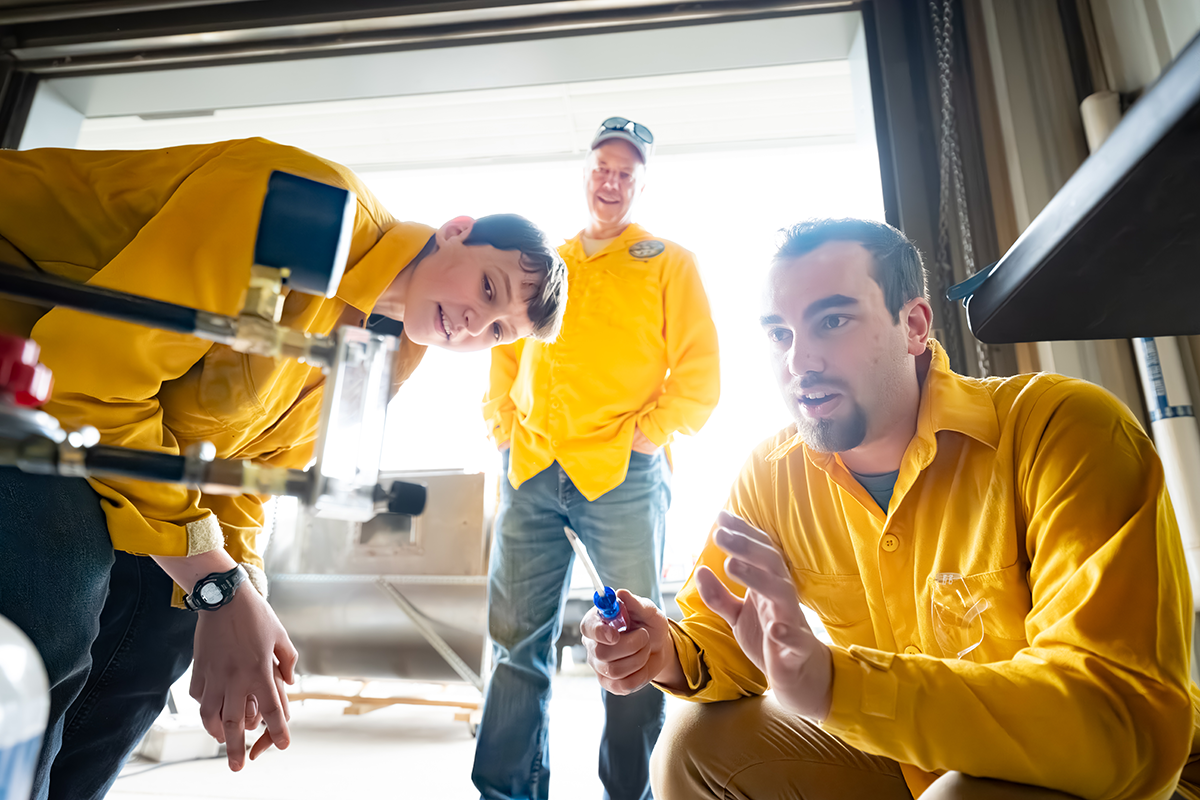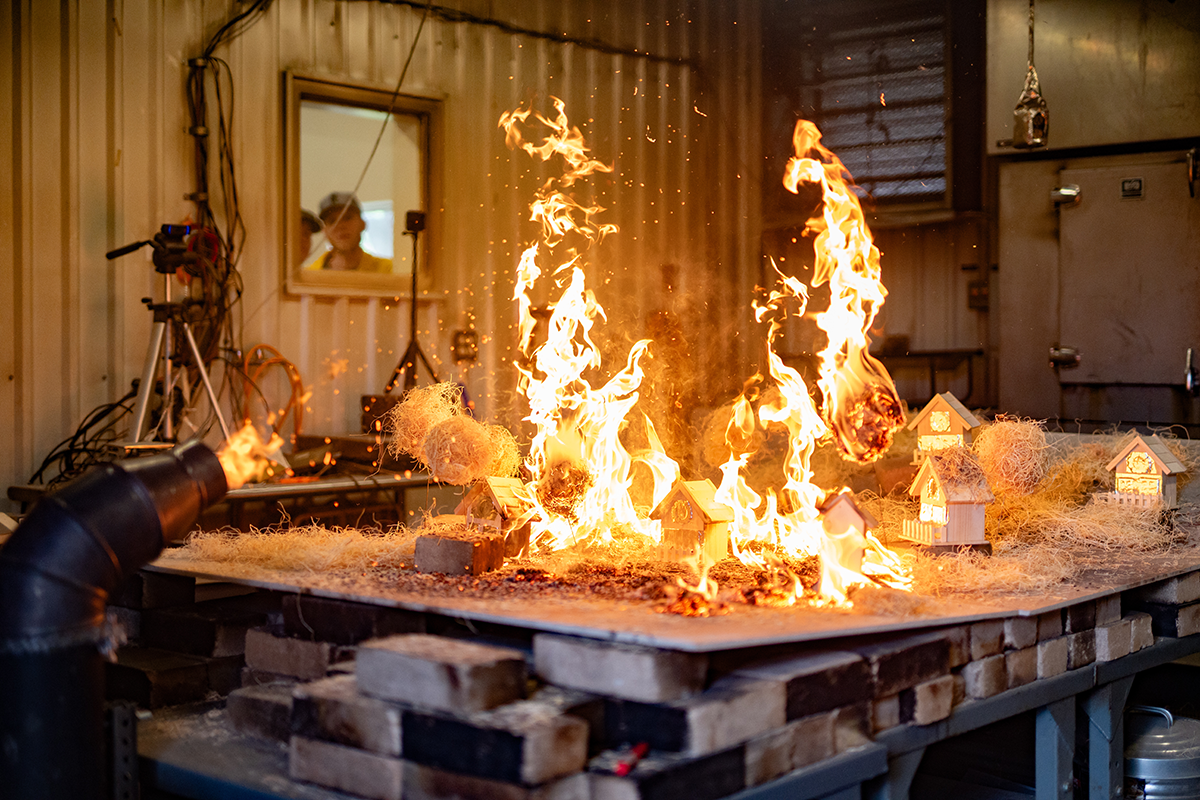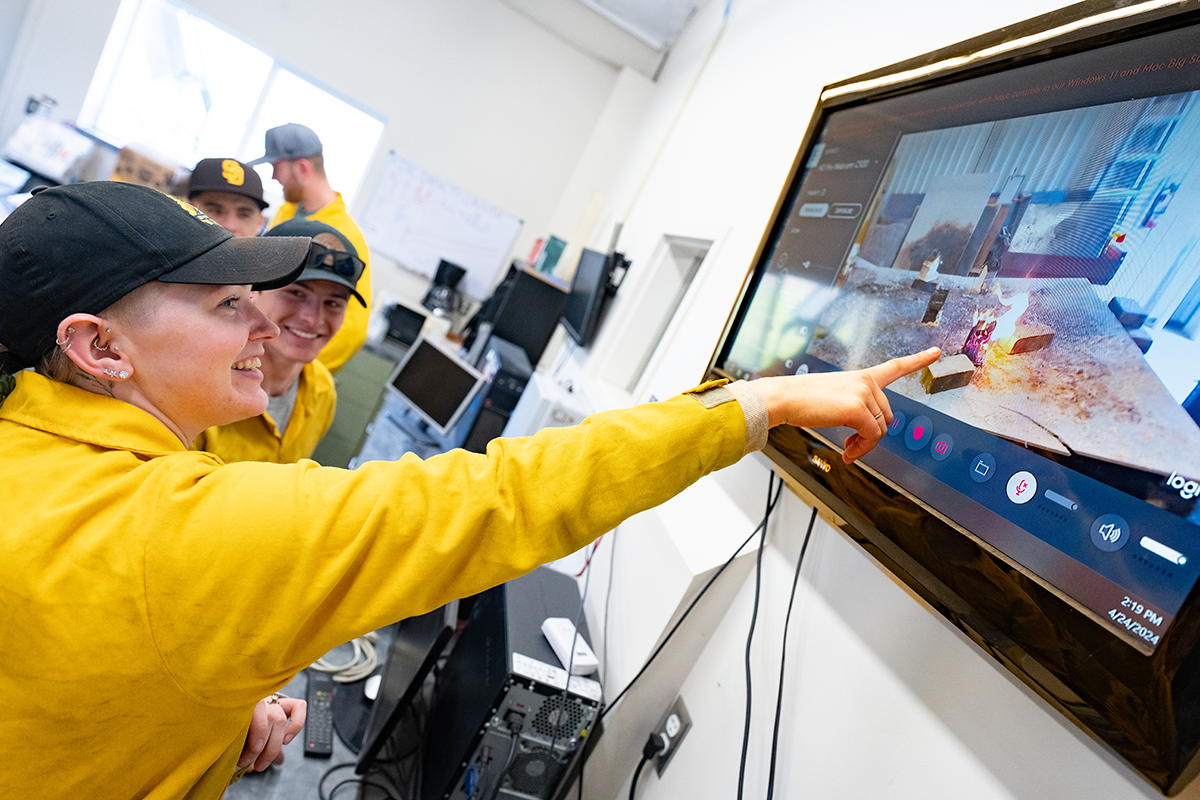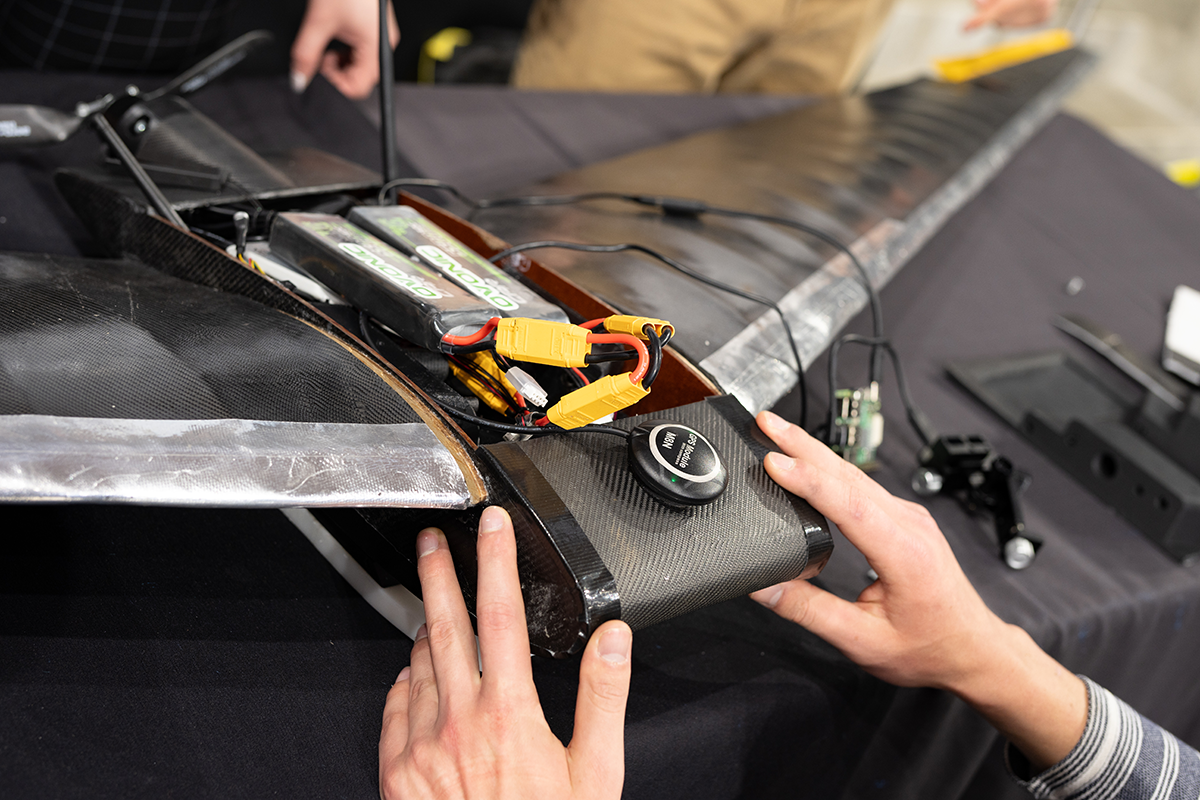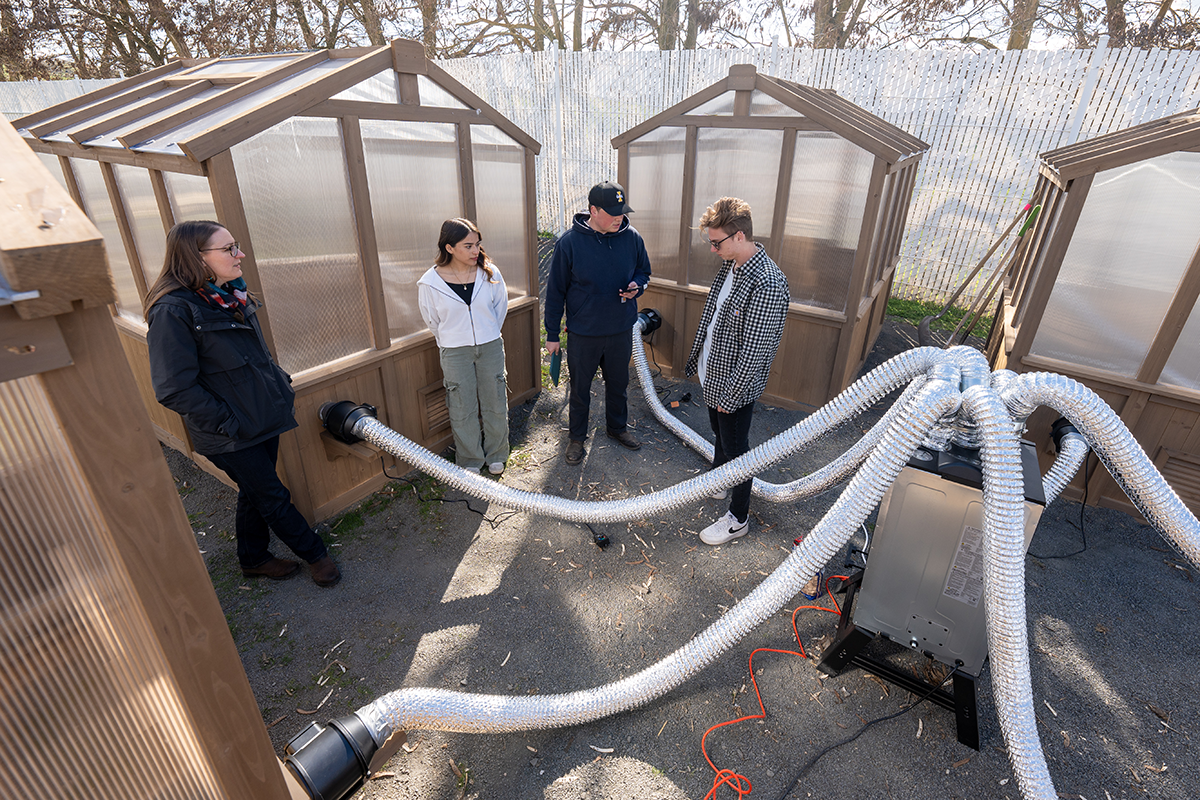Engineering Wildfire Prevention
Student Projects Improve Wildfire Risk Mitigation, Detection and Smoke Impacts
Article by Alexiss Turner '09
Photos by Garrett Britton, University Communications and Marketing
Wildfires consumed 97,504 acres in Idaho in 2023.
University of Idaho College of Engineering students are finding ways to address wildfire risk mitigation, and improve wildfire detection and understanding of smoke impacts through several engineering innovations.
Each project addresses at least one impact of wildfire, such as property damage, timber loss, exposure to wildfire smoke, watershed pollution, death and injury.
This isn’t just playing with fire. We’re providing a wildfire research tool for the world. Peter Wieber ’24, a biological engineering graduate
Ember Generator for Wildfire Research
Regions like Idaho are at high risk of wildfire, and the dry landscape is susceptible to igniting from wind-carried embers.
In partnership with the College of Science, engineering students Jackson Coleman and Peter Wieber of Boise, Caleb Hanson and Aleczander Smart of Caldwell, and Cassidi Shindler of Colfax, Washington, improved upon a device used to produce embers for observing and testing how embers interact with buildings in controlled environments. The device is designed to mimic real wildfire conditions.
This isn’t just playing with fire,” said Wieber ’24, a biological engineering graduate involved in the project. “We’re providing a wildfire research tool for the world."
Embers are a natural byproduct of wildfires, playing a significant role in the spread of wildfire as they can be carried long distances and ignite spot fires downwind. These embers pose a significant threat in the wildland-urban interface, where structures and undeveloped wildland meet, as they can lead to loss of property, injury and fatalities.
Understanding the dynamics of how embers interact with natural and human-made materials is crucial to mitigate wildfire expansion and identify and develop fire-resistant building material.
"This device provides a safe way of understanding the mechanisms for how heat and fire impact everything from structures to plant physiology,” said Alistair Smith, project sponsor and professor and department chair in the Department of Earth and Spatial Sciences.
The student prototype uses a motorized auger woodchip feed system and propane flame to put out a stream of embers for 15 minutes without refueling. Their device ensures accurate assessments while minimizing risks.
Smith’s team includes physicists, fire ecologists, chemists, plant ecophysiologists and remote sensing scientists all interested in learning how fire moves across the landscape.




UAVs for Wildfire Detection
Locating new wildfires quickly plays a pivotal role in mitigating damage and loss.
A team of U of I engineering students is refining the design of an unmanned aerial vehicle (UAV) that uses heat sensors to locate emerging fires while they are still manageable.
"When you think about wildfire, what do you think about? Smoke,” said Ian Cluff, ’24 mechanical engineering graduate. “It’s incredibly difficult to find wildfire early. Our device provides an incredibly stable and efficient way to locate wildfires early and reduce the amount of workforce needed to put the fire out."
The team’s UAV utilizes a NASA-patented, highly efficient flying wing that significantly reduces drag and allows the prototype design to fly without the weight of a vertical tail wing. U of I students built the first UAV using the new wing last year as the first step in demonstrating the commercial viability of the design in real-world UAV application.
This year’s team redesigned the fuselage to house needed components for the thermal camera as well as launching and landing gear for the UAV.
The team includes Cluff of Rathdrum, Virginia Herbord of Shoreline, Washington, Matthew Weber and Kyle Hash of Coeur d’Alene, Akhil Karri of Visakhapatnam, India, and Yibo Wang, of Lianyungang, China.

Agriculture and Wildfire Smoke Exposure
U of I engineering students are also looking at the unseen effects of wildfire smoke on the plants and animals around areas impacted by fire.
"At the end of the day, wildfire smoke can affect many different agricultural industries from livestock to plants,” said Kathy Ruiz, a mechanical engineering 2024 graduate involved in the project. “No one really knows how wildfire smoke affects the plants and animals we rely on for food."
In partnership with the College of Agricultural and Life Sciences, mechanical engineering students Ruiz of Caldwell, Derek Walker of Hayden, Carter Donnelly of Coeur d’Alene, and Matthew Etherton of Post Falls are helping provide livestock producers with recommendations and advice to keep their cattle healthy during wildfire season.
The student prototype generates smoke that can be manipulated by researchers and used in test chambers to run biological tests on calves to determine how smoke inhalation impacts animal health.
In a 2022 study, U of I researchers found the fine particulate matter in wildfire smoke causes a decrease in dairy cow milk production. According to the study, the western United States is home to 2 million dairy cows that produce 25% of the nation’s milk supply.
Published in July 2024.







